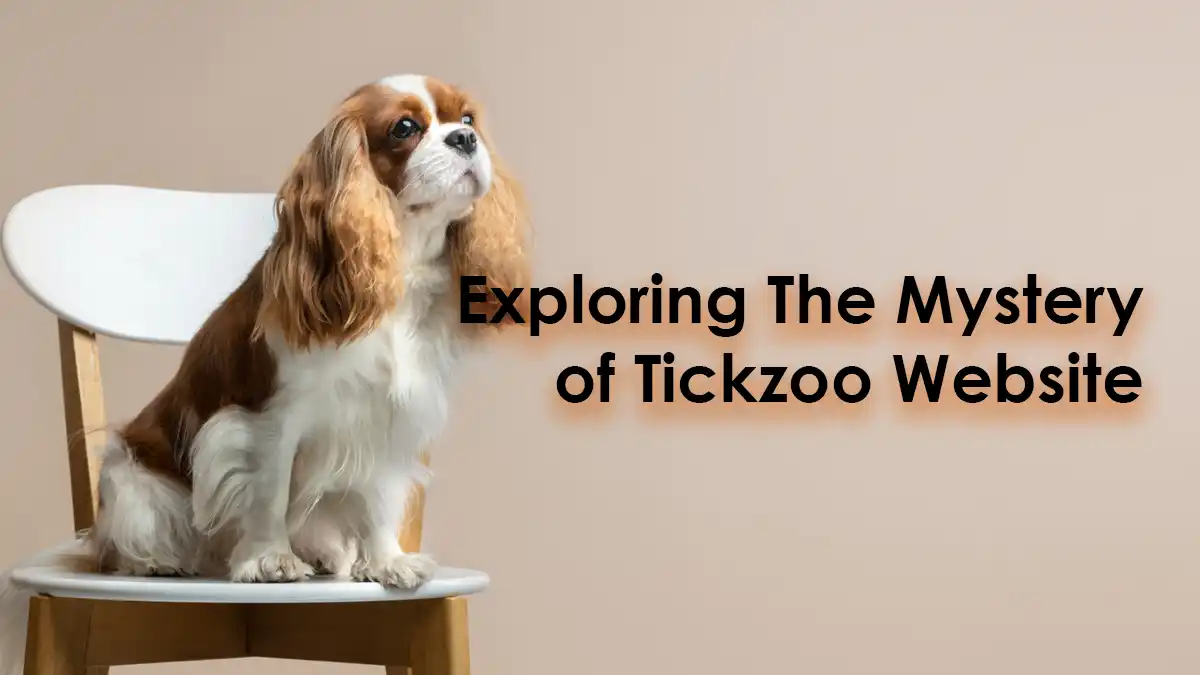TickZoo might sound like a fun little theme park for bugs, but it’s actually a fascinating dive into the world of ticks and their impact on ecosystems, health, and biodiversity. If you’ve ever wondered about these tiny critters and how they shape our environment, you’re in the right place. Let’s unravel the mystery behind TickZoo and why it’s worth paying attention to.
Now, you might be scratching your head—or maybe even scratching an itch—thinking, “Ticks? Really? Why would anyone want to dive deep into that?” Well, my friend, ticks aren’t just random creepy crawlies; they’re a crucial part of nature’s grand design. Whether you’re an eco-enthusiast, a health-conscious individual, or just someone who wants to know what’s lurking in your backyard, TickZoo has got some surprises for you.
Before we jump into the nitty-gritty, let’s clear the air: this isn’t gonna be some boring science lecture. We’re gonna break it down in a way that’s easy to digest, packed with interesting facts, and maybe even a laugh or two. So buckle up, because TickZoo is about to change the way you look at those tiny, eight-legged creatures.
Table of Contents
- What is TickZoo?
- Biological Overview of Ticks
- Ecological Impact of Ticks
- Health Concerns Related to Ticks
- TickZoo in Research and Science
- Prevention and Management of Tick-Borne Diseases
- A Global Perspective on TickZoo
- TickZoo and Biodiversity
- Myths and Facts About TickZoo
- The Future of TickZoo
What is TickZoo?
Alright, let’s start with the basics. TickZoo is essentially a term that refers to the intricate world of ticks—their habitats, behaviors, and interactions with the environment. It’s like a mini ecosystem within the larger ecosystem. Ticks are arachnids, not insects, and they play a significant role in nature, despite their less-than-stellar reputation.
But here’s the thing: ticks aren’t all bad. Sure, they can carry diseases, but they also contribute to the balance of ecosystems by regulating populations of certain animals. Think of them as nature’s population control officers, albeit a bit creepy ones. TickZoo is all about understanding this duality and appreciating the role these tiny creatures play in the grand scheme of things.
Why Should You Care About TickZoo?
Well, for starters, ticks are everywhere. From your backyard to the wilderness, they’re lurking around, waiting for their next meal. And that meal? Could be you. So, knowing about TickZoo isn’t just about satisfying your curiosity; it’s about staying informed and protecting yourself and your loved ones.
Plus, with climate change affecting tick populations and their habitats, understanding TickZoo has become more important than ever. It’s not just about the here and now; it’s about preparing for the future.
Biological Overview of Ticks
Let’s get down to the science part. Ticks are fascinating creatures when you think about it. They’ve been around for millions of years, evolving alongside their hosts. There are over 900 species of ticks worldwide, each with its own unique characteristics and behaviors.
Here’s a quick breakdown of tick biology:
- Ticks have four life stages: egg, larva, nymph, and adult.
- They’re ectoparasites, meaning they live on the outside of their hosts.
- They feed on blood, which is their primary source of nutrition.
- Ticks can survive for long periods without food, sometimes up to several years!
TickZoo’s Role in Disease Transmission
One of the most significant aspects of TickZoo is its role in disease transmission. Ticks are vectors for various diseases, including Lyme disease, Rocky Mountain spotted fever, and babesiosis. These diseases can have serious health implications, making it crucial to understand how ticks operate and how to prevent tick bites.
But don’t panic just yet. With the right knowledge and precautions, you can minimize the risks associated with TickZoo. And that’s exactly what we’ll cover later in this article.
Ecological Impact of Ticks
Now, let’s talk about the bigger picture. Ticks might seem like pests, but they’re actually vital players in the ecosystem. They help control populations of certain animals by transmitting diseases that weaken or kill their hosts. This, in turn, affects the food chain and the overall balance of the ecosystem.
For example, ticks can help keep deer populations in check, which is essential for maintaining healthy forests and grasslands. Without ticks, some animal populations might grow unchecked, leading to overgrazing and habitat destruction. So, while they might not be the most popular creatures, they do serve a purpose.
TickZoo and Environmental Changes
Climate change is having a significant impact on TickZoo. Warmer temperatures and changing weather patterns are altering tick habitats and distributions. This means ticks are showing up in places they’ve never been before, bringing with them new challenges for both wildlife and humans.
Understanding these changes is crucial for predicting and managing the spread of tick-borne diseases. It’s all about staying one step ahead of nature’s little surprises.
Health Concerns Related to Ticks
Let’s face it: ticks can be scary. They carry diseases that can make you seriously ill, and sometimes even deadly. But knowledge is power, and knowing the risks can help you protect yourself.
Here are some common tick-borne diseases:
- Lyme disease: Caused by the bacterium Borrelia burgdorferi, Lyme disease can cause flu-like symptoms, joint pain, and neurological issues if left untreated.
- Rocky Mountain spotted fever: A bacterial infection that can lead to severe health complications if not treated promptly.
- Babesiosis: A malaria-like illness caused by microscopic parasites that infect red blood cells.
Preventing Tick-Borne Diseases
The good news is that most tick-borne diseases are preventable. Here are some tips to keep yourself tick-free:
- Wear long sleeves and pants when hiking or spending time in wooded areas.
- Use insect repellents containing DEET or picaridin.
- Check yourself, your kids, and your pets for ticks after spending time outdoors.
- Remove ticks promptly and properly if you find one attached to your skin.
TickZoo in Research and Science
Scientists are constantly studying TickZoo to better understand its complexities. From tracking tick populations to developing new treatments for tick-borne diseases, research in this field is crucial for public health and conservation efforts.
Recent studies have shown promising results in using genetic engineering to control tick populations. By altering the genes of certain tick species, scientists hope to reduce the spread of diseases and minimize the impact on ecosystems.
The Importance of TickZoo Research
TickZoo research isn’t just about understanding ticks; it’s about understanding the broader implications of their presence. By studying ticks, scientists can gain insights into climate change, biodiversity, and disease transmission. This knowledge can then be applied to other areas of research, benefiting both humans and the environment.
Prevention and Management of Tick-Borne Diseases
Prevention is key when it comes to TickZoo. But what happens if you get bitten by a tick? Don’t worry; we’ve got you covered. Here’s what you need to do:
- Remove the tick promptly using tweezers, grabbing it as close to the skin as possible.
- Clean the area with soap and water or an antiseptic.
- Monitor the bite site for signs of infection or a rash.
- Seek medical attention if you experience symptoms like fever, headache, or muscle aches.
Managing tick populations is also an important aspect of TickZoo. This can be done through habitat modification, biological control, and chemical treatments. Each method has its pros and cons, so it’s important to choose the right approach based on the specific situation.
A Global Perspective on TickZoo
Ticks aren’t just a problem in one part of the world; they’re a global issue. Different regions have different tick species and associated diseases, making it essential to approach TickZoo from a global perspective.
For example, in Europe, the castor bean tick (Ixodes ricinus) is a major concern, while in Australia, the paralysis tick (Ixodes holocyclus) poses a significant threat to both humans and wildlife. Understanding these regional differences is crucial for developing effective prevention and management strategies.
TickZoo and International Cooperation
International cooperation is vital for tackling TickZoo on a global scale. By sharing data, resources, and expertise, countries can work together to combat the spread of tick-borne diseases and protect ecosystems worldwide.
TickZoo and Biodiversity
TickZoo plays a unique role in biodiversity. While they might seem like pests, ticks contribute to the diversity of life on Earth. They provide food for certain animals, such as birds and reptiles, and help regulate populations of other species.
However, the balance is delicate. Too many ticks can have negative effects on biodiversity, while too few can disrupt ecosystems. It’s all about finding the right balance and understanding the complex interactions within TickZoo.
Conservation Efforts and TickZoo
Conservation efforts often focus on protecting large, charismatic animals, but don’t forget about the little guys. Ticks, as part of TickZoo, are just as important for maintaining biodiversity. By conserving their habitats and understanding their role in ecosystems, we can ensure the survival of countless species.
Myths and Facts About TickZoo
There are a lot of myths surrounding ticks and TickZoo. Let’s bust some of those myths and get to the facts:
- Myth: Ticks fall from trees onto their hosts.
Fact: Ticks don’t fall from trees. They usually wait on low vegetation for a host to pass by. - Myth: You can suffocate a tick by covering it with nail polish.
Fact: This doesn’t work. The best way to remove a tick is by using tweezers. - Myth: Ticks are only active in the summer.
Fact: Ticks can be active year-round, depending on the climate.
The Future of TickZoo
As we look to the future, TickZoo will undoubtedly continue to evolve. With climate change, urbanization, and other environmental factors, ticks will face new challenges and opportunities. It’s up to us to adapt and find ways to coexist with these fascinating creatures.
Research, education, and conservation will play crucial roles in shaping the future of TickZoo. By working together, we can ensure that ticks continue to play their part in the ecosystem without causing harm to humans and other animals.
What Can You Do?
You don’t have to be a scientist to make a difference in TickZoo. Here are some simple things you can do:
- Learn about ticks and their role in the ecosystem.
- Practice safe outdoor habits to prevent tick bites.
- Support research and conservation efforts focused on TickZoo.
Conclusion
TickZoo might not be the most glamorous topic, but it’s certainly an important one. From their role in ecosystems to their impact on human health, ticks are fascinating creatures that deserve our attention and respect. By understanding TickZoo, we can better protect ourselves, our environment,


